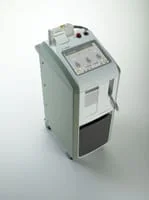Research shows that an estimated 5-10% of the population will suffer with nail fungus. You may suffer from nail fungus if you have one or more of the following symptoms: thickened nails, brittle or crumbly nails, discoloured nails, disfigured nails or even having nails that lack lustre or shine.Since fungal nails are usually more resistant and more difficult to treat than Athlete's foot, treatment and complete eradication can be challenging. Topical and oral medications have limited to poor success in treating nail fungus and are accompanied with various drug side effects. In recent years lasers have been developed specifically for treating nail fungus with great success and no side effects. Our clinic currently uses one of the leading laser systems available on the market today.

How Does the Laser Treatment Work?
The laser kills the fungus that lives underneath the nail by passing through the nail without damaging the nail plate. During the treatment, the nail will generally feel warm with possibly "pinprick" sensations. A treatment will take 15-30 minutes.
Generally to treat fungal nails, 2-3 treatments will be required spaced approximately 2 months apart. As the nail continues to grow, new clean nail will be visible and continue to grow in until y ou have no fungus left.
Could the Fungus Come Back?

When having the laser treatments it is vital to prevent getting reinfected with the fungus. We give each patient a spray that is to be used on all footwear, socks and even bedclothes. We also give each patient a topical solution to prevent any spread from the nails to surrounding tissue. During the treatments it is also recommended that any old footwear be discarded.
Tips for Prevention
Before bed, thoroughly wash and dry your feet, and apply a non-prescription anti-fungal cream to the entire foot from the ankle down. Use the cream every night, then gradually apply it less often. Keep your feet dry. Dry feet are less likely to become infected. Apply powder to your dry feet after you take a shower or bath.
-
Don't share nail clippers or nail files with others.
-
Don't share shoes or socks with others.
-
Try not to injure your nail, such as by cutting it too short (trauma to the nail may lead to infections).
-
Wear dry cotton socks, and change them two or three times a day if necessary.
-
Wear dry shoes that allow air to circulate around your feet (tight, enclosed, moist shoes contribute to fungal toenail infections).
-
Wear shower sandals or shower shoes when you are at a public pool or shower.







